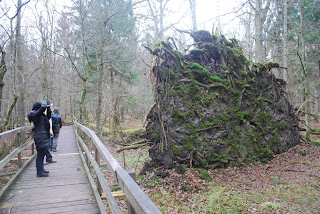Making marmalade
Some of my other posts have dealt with seasonal food topics,
such as wild garlic, elderflowers and game. Well, January and the beginning of
February is the time when Seville or marmalade oranges are in season – only for
about five weeks.
The word “marmalade” originally referred to quince preserve.
In fact, the association of the word with citrus preserves is a more recent English
phenomenon and is not linguistically correct in many other European languages.
The popular myth is that James Keillor of Dundee invented marmalade in 1797
when he was confronted with an unwanted cargo of Seville oranges. However,
there are recorded instances of Seville oranges being referred to as marmalade
oranges before that. Nevertheless, Dundee is associated with marmalade (and
almond-topped fruit cake) in British culture.
Seville oranges are almost impossible to get in either in
Switzerland – where I now live – or in Brussels, where I used to live. Even in
Britain it can be hit and miss finding them during the short season, since few people
are bothered making marmalade from scratch any more (you can buy tinned kits
which are a lot less work and the result taste fine; it’s just that I like
chunky peel in my marmalade and even the kits that are labelled “coarse cut”
aren’t nearly chunky enough for me).
For the first time since I last left Ireland in 2008, I was
in London at exactly the right time last weekend and I spent all of Saturday
looking for a market that would sell Seville oranges, without success. Then,
having given up, I was on my way to the cinema with my son and daughter when we
stopped at a supermarket for goodies and there my son found them. I bought two kilos, which I brought home to
Switzerland the next day.
On Monday evening, when I got home from a long day at work,
I started to make the marmalade. I follow Delia Smith’s basic recipe (http://www.deliaonline.com/recipes/cuisine/european/english/traditional-seville-orange-marmalade.html)
but it was a few years since I had last made a batch and I realised early on
that I was breaking a few rules. First of all, I was working with double the
quantity that she recommended as being the most you could make at once if you
wanted it to set properly. I’d multiplied it by 1.5 before without coming to
harm but doubling? Of course, I could have split the oranges and frozen half
but I wanted to get all the messiness over and done with (you’ll see why). More
importantly, I realised that I’d forgotten to buy lemons; ideally I should have
had two (you use the juice and seeds but not the peel) so I didn’t know if that
would also affect the likelihood of the mixture setting.
Anyway, I proceeded with juicing the oranges, my chapped
fingers getting raw from the sharp juice, and then chopping the peel. That took
about an hour and a half. I saved all the seeds and extraneous pith in a muslin
bag. Then I had to put the juice and peel into a saucepan with 4 litres of
water (a little less that Delia specified but I was afraid that using the full
amount would be another complication when it came to setting point). I tied the
muslin bag to the handle of the pot so that it was suspended in the liquid (the
seeds and pith are the main source of pectin that allows the marmalade to set) and
cooked the peel for about 2 hours. By then it was time for bed (after I had
cleaned all the kitchen surfaces, which were sticky with orange juice).
The first thing to do on Tuesday evening was to squeeze any
residual pectin out of the muslin bag. You get this sticky orange goo that you
have to scrape off the bag (and your hands) with a spoon. Messy! Then I had to
warm the sugar a little in the oven (4 kilos of it) and put it into the pot.
Now the decision to double the quantities came back to haunt
me. The liquid was too near the rim of the pot for my liking and I had visions
of it boiling over and making an unholy mess. So I transferred it to a pot that
was twice the size. However, I couldn’t get it to a fast boil, after an hour of
trying, so I had to transfer it back. By then it had concentrated a bit but I
had to watch it when it came to a fast boil as it started splattering
everywhere. Still, after the prescribed 15 minutes of fast boil, when I tested
it on a saucer that I’d put in the freezer, it had set. It was time then to stir
in a knob of butter to clarify the mixture, put the jars in the oven to warm,
and wait 15 minutes for the peel to settle.
I’ve never succeeded in getting jam or marmalade into jars
without making a mess. It goes everywhere. It was on my face, the seat of my
trousers, the cooker, the worktop, the floor, the tiling. I’m sure I’ll still
find some more tonight, even though I tried to clean up.
However, I now have 11 pots of delicious chunky marmalade.
It’s a little sweeter than my usual effort, probably thanks to the absence of
lemon and the concentration of the liquid. But it has set beautifully.
One of the reasons why it’s so important to have good
marmalade is in order to be able to follow another Delia Smith recipe:
marmalade bread and butter pudding. It’s divine – and very easy.











